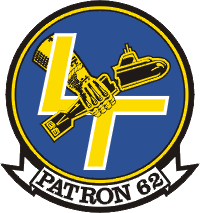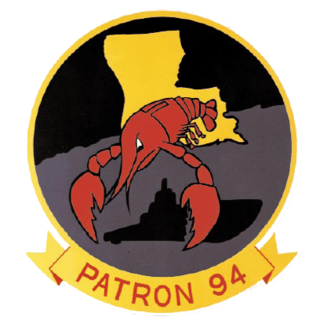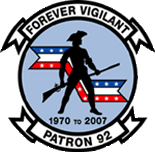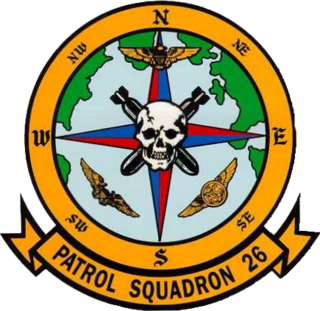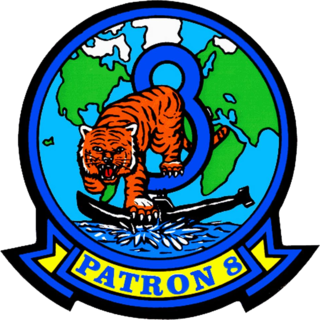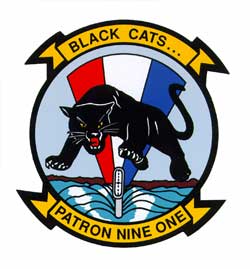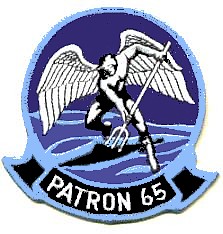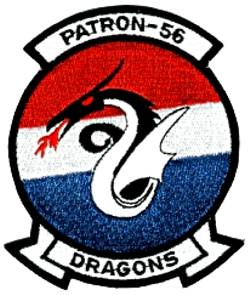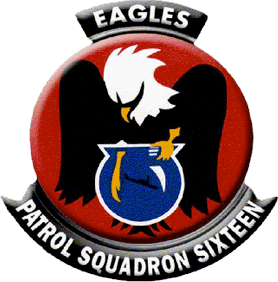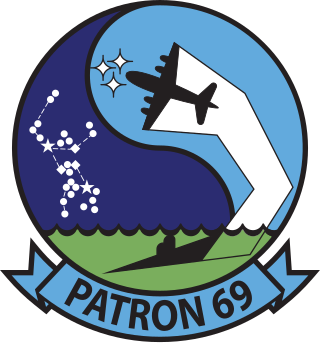Overview
The current VP-62 was established on 1 November 1970. It is the fourth U.S. Navy squadron to be designated VP-62, the first VP-62 having been disestablished on 1 July 1943, the second VP-62 having been redesignated Patrol Bombing Squadron 62 (VPB-62) on 1 October 1944 and the third VP-62 having been disestablished on 30 January 1950. [2]
VP-62 was established from the personnel and SP-2H Neptune aircraft assets of two Naval Air Reserve patrol squadrons existing prior to November 1970: VP-67F1 and VP-67F2. The establishment of VP-62, other land-based Naval Reserve patrol squadrons, and numerous sea-based Naval Reserve fighter squadrons, attack squadrons, carrier airborne early warning squadrons, helicopter squadrons, etc., all resulted from a major reorganization of the Naval Air Reserve that took place in 1970 in response to problems with the call-up of tactical Naval Air Reserve squadrons and personnel during the USS Pueblo Crisis in 1968. [3] Key among these problems was the incompatibility of aged, obsolescent combat aircraft in the Naval Air Reserve versus the active duty Fleet and an overly bureaucratic process for mobilizing Naval Reserve personnel to active duty. Under this reorganization, combat-coded shore-based and sea-based Naval Air Reserve squadrons, also known as Reserve Force Squadrons (RESFORON), would mirror their active duty Navy squadron counterparts in Naval Aviation and fly the same Type/Model/Series (T/M/S) aircraft as active duty units so that they could readily integrate with the active duty Fleet. These squadrons would be further organized under various Reserve wing organizations that were also created to parallel those in the Regular Navy.
Twelve (12) Naval Reserve patrol squadrons, later increasing to thirteen (13) patrol squadrons, were formed across the Continental United States (CONUS), structured along the same lines as the Regular Navy patrol squadrons and with nearly identical organization and manning levels. The primary distinction between the active duty and reserve squadrons was that the Regular Navy squadrons would continue to be staffed at peacetime manning levels that would be augmented during times of crisis, contingency operations, or wartime by additional Regular Navy and/or Naval Reserve personnel.
In contrast, the Naval Reserve squadrons would have a full wartime-manning complement from the start, with cost savings derived from approximately 66% to 75% of each reserve squadron's manning being filled by part-time Selected Reservists (SELRES) performing 65 man-days to over 150 man-days per person per year and the remaining 25% to 34% of manning filled by full-time active duty Reserve personnel in the Navy's Training and Administration of the Reserve (TAR) program (NOTE: From 2005 to 2021, TAR personnel were known as Full Time Support (FTS) personnel).
The concept known as "12/2/1" had 12 Naval Reserve VP squadrons (later increased to 13 Naval Reserve VP squadrons) residing under two commands: Commander, Reserve Patrol Wing Atlantic (COMRESPATWINGLANT) and Commander, Reserve Patrol Wing Pacific (COMRESPATWINGPAC), both under the control of one central Flag Officer authority, Commander, Naval Air Reserve Force (COMNAVAIRESFOR).
By 1990, VP-62 was comprised nine newly manufactured P-3C Update III aircraft and approximately 400 personnel of which +/- 130 were full-time active duty TAR personnel and +/- 270 were part-time SELRES personnel. This included fifteen (15) fully qualified 12-man combat air crews meeting the same annual flight time and combat readiness requirements as their active duty counterparts. Each combat air crew consisted of three Naval Aviators (pilots), two Naval Flight Officers, and seven enlisted Naval Aircrewmen, the overwhelming majority of whom had extensive prior active duty flight crew experience in the Regular Navy. While stateside at NAS Jacksonville, VP-62 would maintain a duty schedule/flight schedule nearly identical to that of its active duty P-3C squadron counterparts. The only distinction would occur once or twice a month when VP-62 would deviate from the active duty squadrons' Monday through Friday at home schedule and execute a Wednesday through Sunday schedule to accommodate monthly or bi-monthly drill weekends. While deployed to overseas locations, VP-62 would maintain the same 24/7 operational posture as the deployed active duty patrol squadrons.
Post-Cold War force cuts across both the Regular Navy and Naval Reserve from the mid-1990s to the early 2000s, further exacerbated by post-11 September 2001 force cuts to remaining Naval Reserve aviation squadrons as a "bill payer" for the Navy's contribution to funding ground combat unit operations in Southwest Asia, resulted in both Reserve patrol wings and eleven of the original thirteen Naval Reserve (renamed Navy Reserve in 2005) P-3 squadrons being incrementally inactivated. Today, VP-62, along with its Pacific Fleet counterpart Reserve patrol squadron, Patrol Squadron SIXTY-NINE (VP-69) at Naval Air Station Whidbey Island, Washington, are the only two Navy Reserve patrol squadrons still in active service.
Flight crew positions in VP-62, especially for SELRES Naval Aviators and Naval Flight Officers, are highly competitive and selected via an in-depth screening and selection process. All pilots and NFOs have previous active duty experience in Regular Navy Fleet VP squadrons, all are previously mission commander qualified, many are weapons and tactics instructors (WTI) and/or NATOPS instructors, and most have served as instructors in either the P-3 Orion / P-8 Poseidon Fleet Replacement Squadron, Patrol Squadron THIRTY (VP-30); or as flight instructors in the Naval Air Training Command (NATRACOM); or as flight test evaluators in the Operational Test and Evaluation Force (OPTEVFOR) or the Naval Air Systems Command (NAVAIRSYSCOM).
